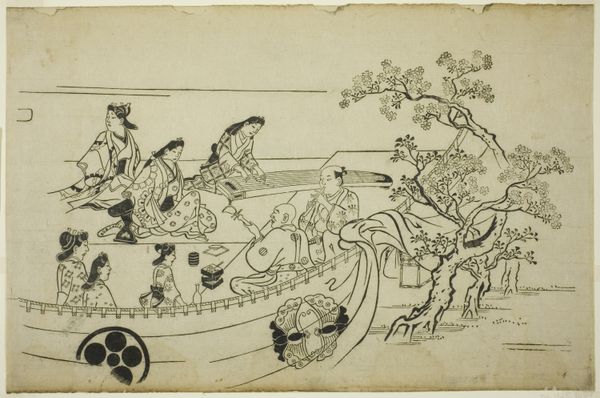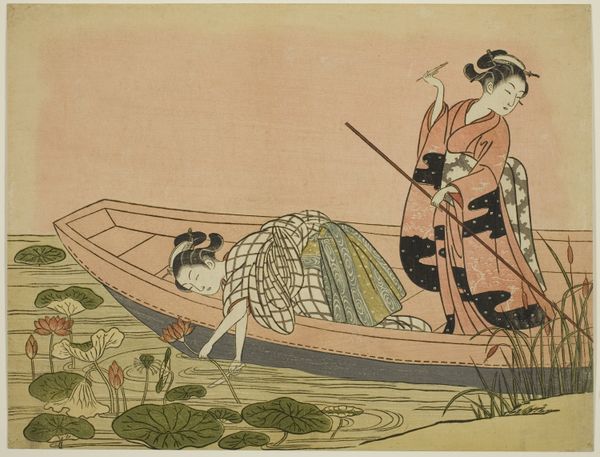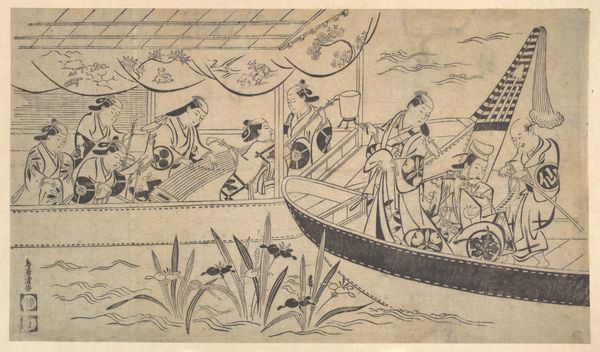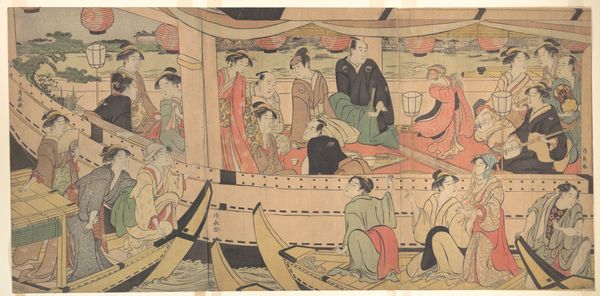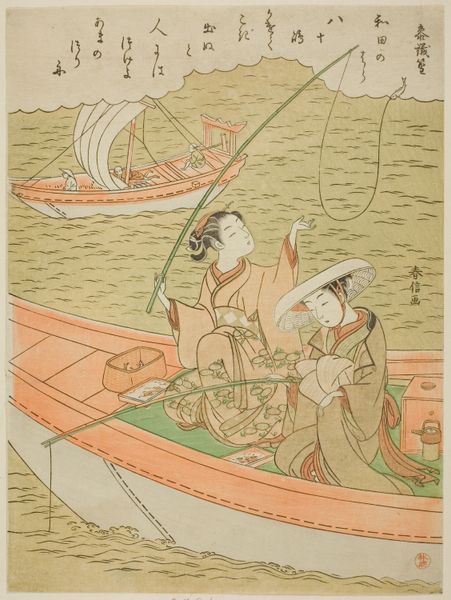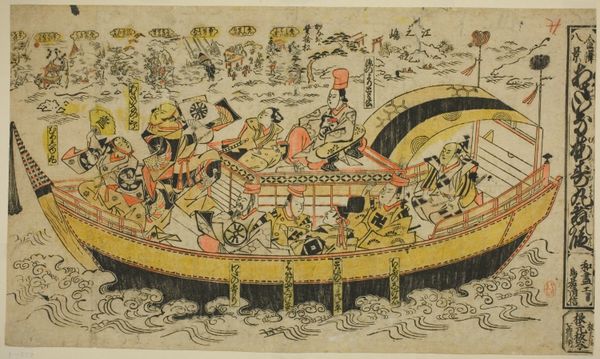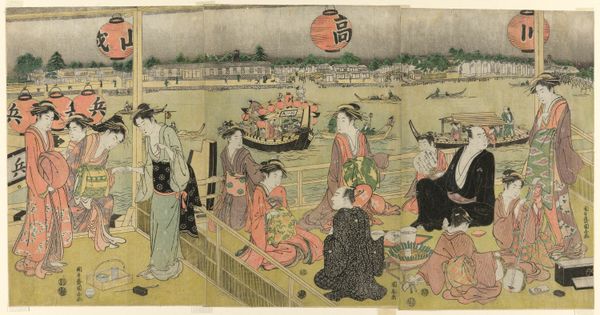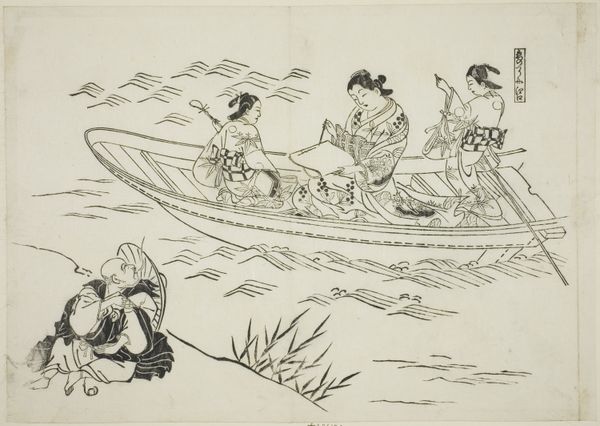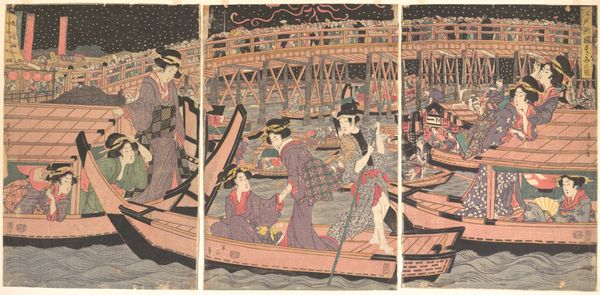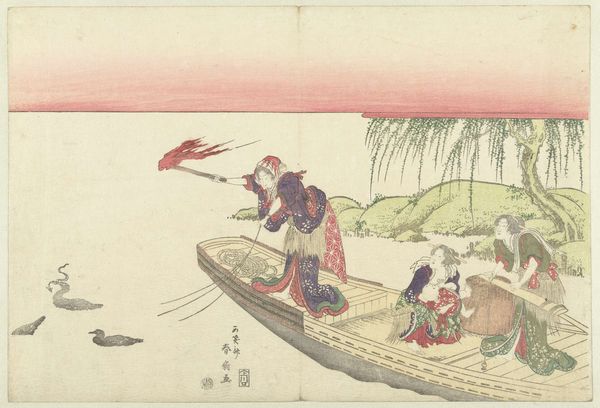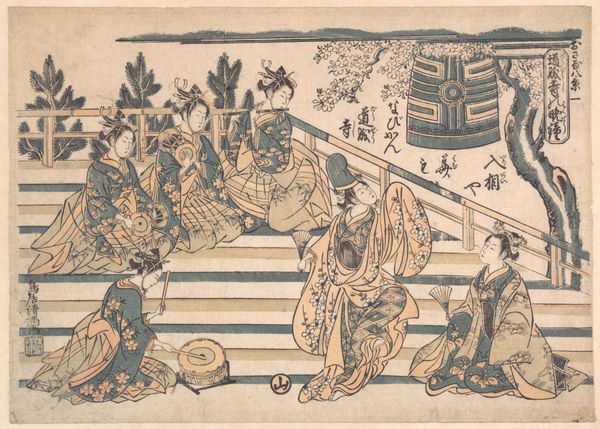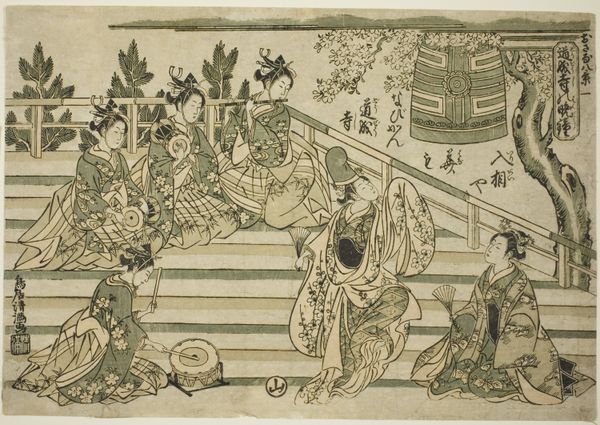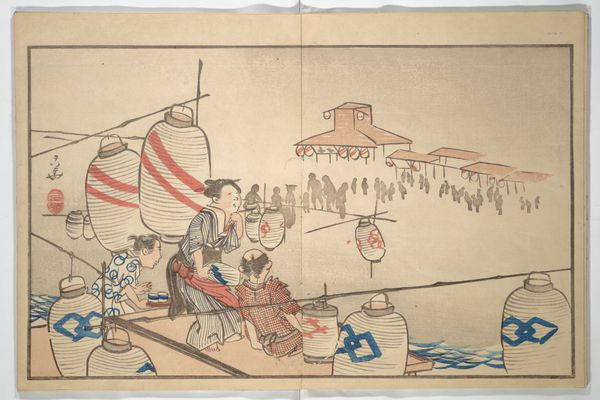
print, ink, woodblock-print
#
narrative-art
#
ink painting
# print
#
asian-art
#
ukiyo-e
#
ink
#
woodblock-print
Dimensions: 12 × 22 1/2 in.
Copyright: Public Domain
Curator: What a wonderfully odd print this is. "The Treasure Ship" by Furuyama Moromasa, circa 1712, currently residing here at The Art Institute of Chicago. Its crafted as a woodblock print with ink. Quite an intriguing tableau, don't you think? Editor: Immediately, I’m struck by the sheer exuberance of it all. It feels almost chaotic, brimming with characters and detail, yet somehow still contained within the frame. The colours are muted, which oddly enhances the busyness. Curator: This work falls squarely within the ukiyo-e tradition, which translates to "pictures of the floating world." That concept reflects the era's focus on fleeting beauty, pleasure, and the ephemerality of life. Consider, then, the role of trade in this transience. The 'treasure' this ship carries would have far reaching social and cultural impact. Editor: Indeed. Ships are powerful symbols aren't they? Throughout so many cultures, ships embody journeys, the traversing between worlds – tangible and spiritual. And those figures onboard. Do you see a certain theatricality? Curator: Absolutely. Each figure seems to embody a specific role or characteristic. Ukiyo-e prints often acted as visual narratives, portraying popular stories, legends, and historical events. This "treasure ship" specifically invokes the Takarabune from Japanese folklore. Takarabune are believed to bring good fortune at the New Year. Consider this image not as mere documentation but rather a symbolic manifestation of the era’s cultural hopes and desires. Editor: And what of that dragon prow? Dragons, those enduring symbols of power, protection, and good fortune in East Asian cultures. Its presence transforms the ship into more than just a vessel of commerce. It becomes a symbol of potent cultural forces, sailing toward prosperity, perhaps even immortality. It truly captures a sense of optimism and the yearning for auspicious beginnings. Curator: And also the politics, if we interpret its 'treasures' as commodities central to the complex geopolitical landscape of the era, a landscape marred by exploitative practices, unequal exchange, and often state-sanctioned violence. A bit more ambiguous than merely buoyant hopes. Editor: Fair point. I like the tension this brings. A complex layering, which seems fitting. It reflects a shared vision: both celebratory and cautionary, I see an image of transition and transformation – both individual and collective. Curator: Precisely. It reminds me of how crucial it is to examine art with sensitivity to historical contexts, cultural memory, and critical awareness of power relations.
Comments
No comments
Be the first to comment and join the conversation on the ultimate creative platform.
